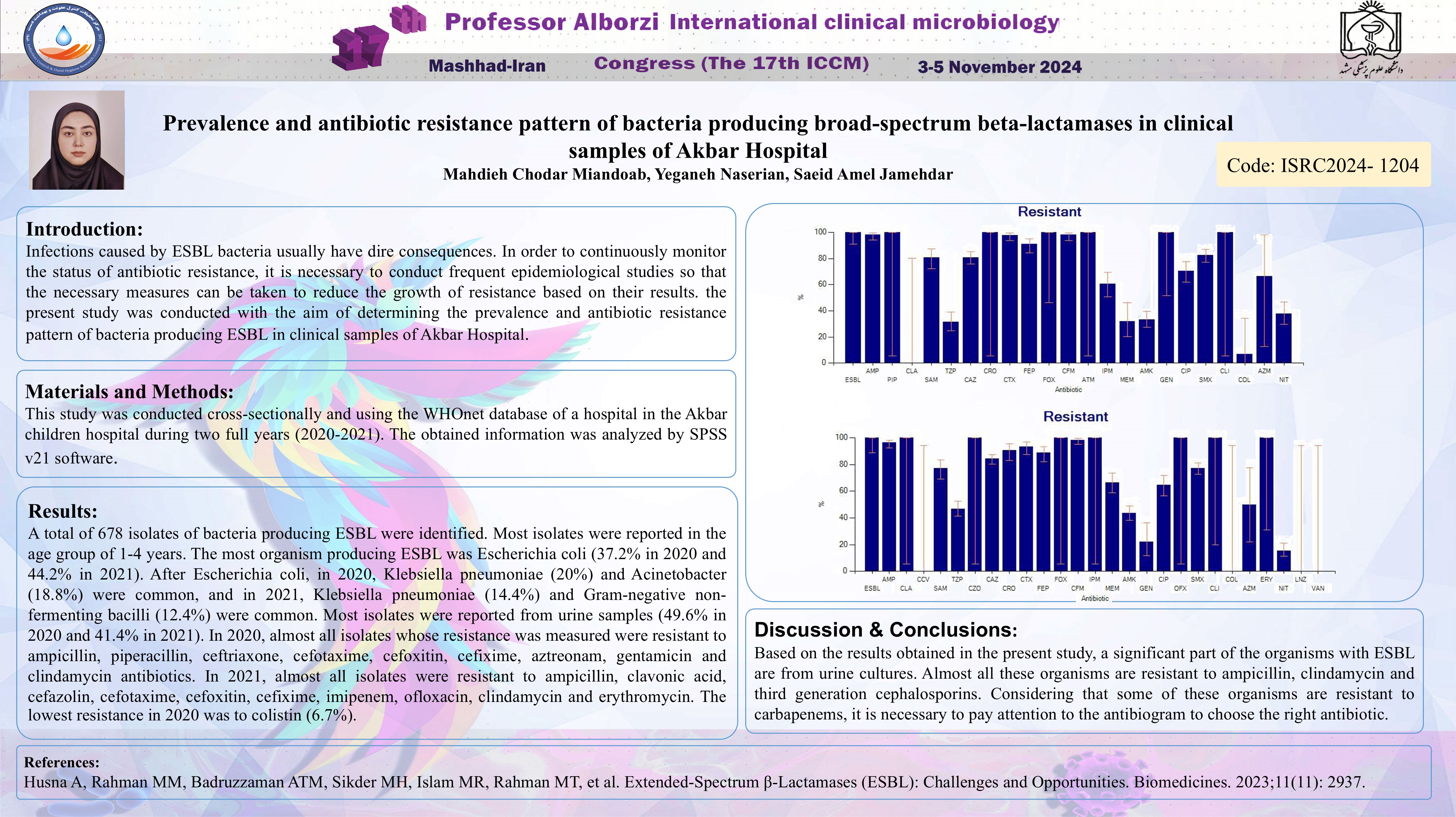00
کد: G-1204
نویسندگان: Mahdieh Chodar Miandoab ℗, Yeganeh Naserian, Saeid Amel Jamehdar ©
زمان بندی: زمان بندی نشده!
دانلود: دانلود پوستر
خلاصه مقاله:
خلاصه مقاله
Introduction: Extended-spectrum beta-lactamases (ESBL) are enzymes that show resistance to most beta-lactam antibiotics. Infections caused by these bacteria usually have dire consequences. In order to continuously monitor the status of antibiotic resistance, it is necessary to conduct frequent epidemiological studies so that the necessary measures can be taken to reduce the growth of resistance based on their results. Objectives: the present study was conducted with the aim of determining the prevalence and antibiotic resistance pattern of bacteria producing ESBL in clinical samples of Akbar Hospital. Materials & Methods: This study was conducted cross-sectionally and using the WHOnet database of a hospital in the Akbar children hospital during two full years (2020-2021). The obtained information was analyzed by SPSS v21 software. Results: A total of 678 isolates of bacteria producing ESBL were identified. Most isolates were reported in the age group of 1-4 years. In terms of the inpatient department, the most isolates were reported from PICU (30.8% in 2020 and 26.7% in 2021). The most organism producing ESBL was Escherichia coli (37.2% in 2020 and 44.2% in 2021). After Escherichia coli, in 2020, Klebsiella pneumoniae (20%) and Acinetobacter (18.8%) were common, and in 2021, Klebsiella pneumoniae (14.4%) and Gram-negative non-fermenting bacilli (12.4%) were common. Most isolates were reported from urine samples (49.6% in 2020 and 41.4% in 2021). In 2020, almost all isolates whose resistance was measured were resistant to ampicillin, piperacillin, ceftriaxone, cefotaxime, cefoxitin, cefixime, aztreonam, gentamicin and clindamycin antibiotics. In 2021, almost all isolates were resistant to ampicillin, clavonic acid, cefazolin, cefotaxime, cefoxitin, cefixime, imipenem, ofloxacin, clindamycin and erythromycin. The lowest resistance in 2020 was to colistin (6.7%). Conclusion: Based on the results obtained in the present study, a significant part of the organisms with ESBL are from urine cultures. Almost all these organisms are resistant to ampicillin, clindamycin and third generation cephalosporins. Considering that some of these organisms are resistant to carbapenems, it is necessary to pay attention to the antibiogram to choose the right antibiotic.
کلمات کلیدی
Extended Spectrum Beta-Lactamases, Children, Antibiotic Resistance
